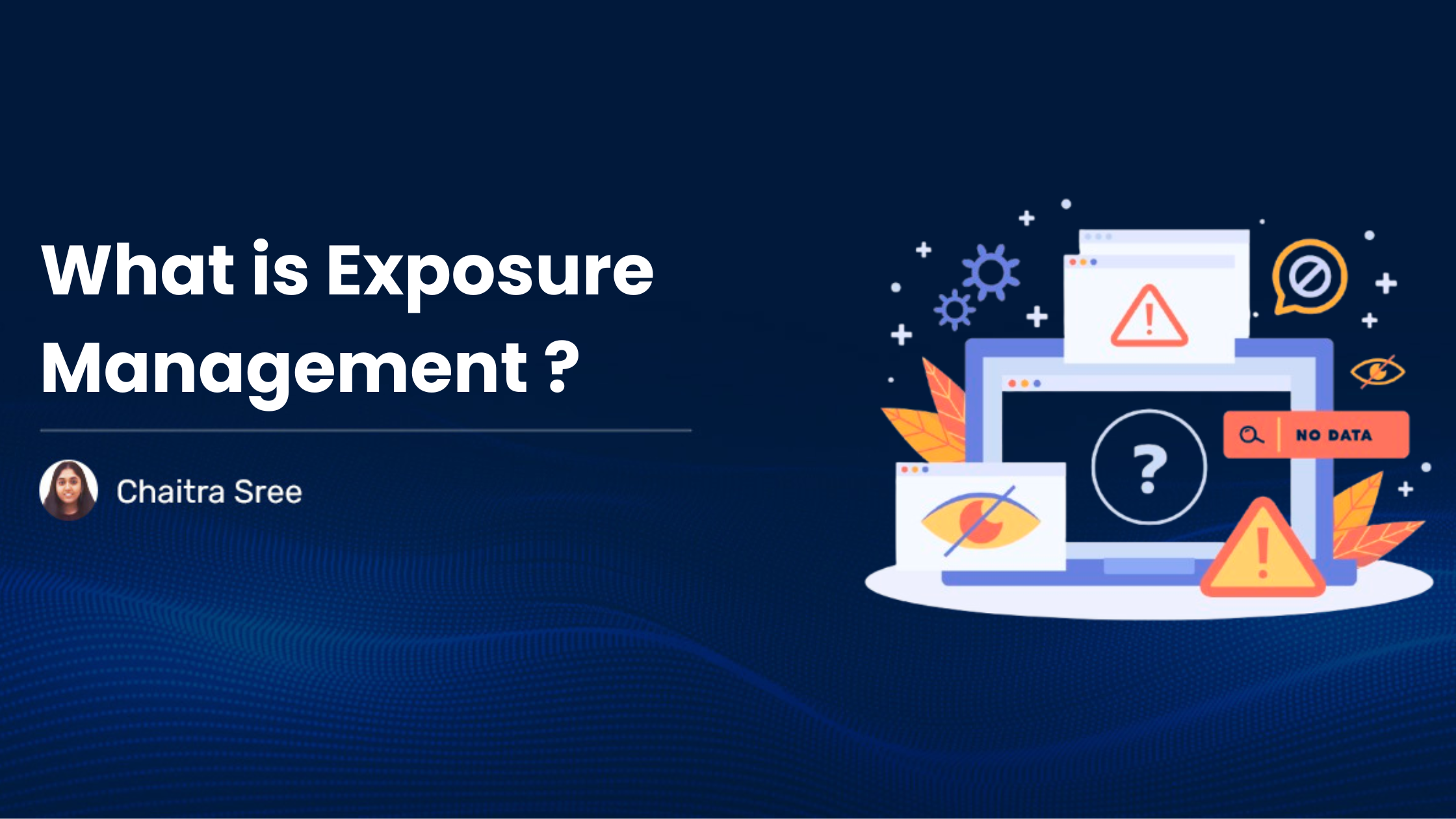Every organization today depends on a wide range of digital assets, such as laptops, servers, cloud instances, and applications. These assets make business possible, but they also open doors to potential risks. If not managed properly, these risks become security exposures: opportunities for attackers to invade and cause harm.
Exposure Management is the process of identifying, assessing, prioritizing, and remediating these risks across all IT assets. It focuses on reducing the attack surface and ensuring that all known and potential exposures are addressed before they can be exploited.
It helps security teams stay proactive, ensuring that the environment is continuously monitored, risks are clearly understood, and the most critical issues are addressed first.
The Core Idea Behind Exposure Management
Not all security risks are equal. Some are low-severity non-security patches, while others are critical flaws that attackers are actively exploiting. Traditional security tools often flood IT teams with long lists of vulnerabilities, most of which don’t pose a real-world threat.
Exposure Management solves this by focusing on what’s actually exposed and what’s most likely to be exploited, considering:
- How easily an attacker can reach the asset
- Whether the vulnerability is known to be exploited in the wild
- How critical the asset is to business operations
It’s about moving from just knowing what’s wrong to knowing what matters.
The Five Key Components of Exposure Management
To implement an effective exposure management strategy, enterprises need to adopt a continuous and unified approach that includes:
1. Asset Exposure
You can’t protect what you don’t know exists. The first step in exposure management is identifying all listed and unlisted assets across on-premises, cloud, and hybrid environments.
2. Vulnerability, Misconfiguration, and Anomaly Detection
Once assets are discovered, they must be scanned for known vulnerabilities, outdated software, weak configurations, missing patches, and other exposure points.
3. Risk-Based Prioritization
Instead of treating all findings equally, exposures are ranked based on real-world risk factors such as:
- Exploit Prediction Scoring System (EPSS)
- Asset criticality
- Threat intelligence
- External exposure
This ensures that time and resources are spent on what matters most.
4. Remediation
Fixing exposures can mean patching, editing the default settings, or applying security controls. With integrated tools like Saner CVEM, this process can be automated to reduce effort and delays.
5. Continuous Monitoring
Exposure management is not a one-time scan. It requires continuous monitoring to detect new exposures emerging due to system changes, new vulnerabilities, or misconfigurations.
Real-World Scenario
Let’s say your organization runs 2,000 devices and your vulnerability scanner reports 10,000 issues. Your team has limited time, so where do you start?
Exposure Management will:
- Identify which 200 vulnerabilities are exposed.
- Highlight 50 that needs immediate attention.
- Show that 20 of these based on business criticality.
Now you know what’s urgent. You fix those 20 first, reducing risk significantly with a fraction of the effort.
Benefits of Exposure Management
Here’s how exposure management helps IT and Security teams work more efficiently:
| Benefit | Description |
| Reduced Attack Surface | Identifies and removes risks continuously. |
| Faster Remediation | Focuses on the most critical risks, saving time |
| Improved Team Collaboration | Brings IT, Security, and Operations into a single workflow |
| Stronger Compliance | Helps meet audit and regulatory requirements with just a few clicks. |
| Proactive Defense | Prevents incidents by fixing risks before they’re exploited |
How Saner CVEM Enables Smart Exposure Management?
Saner CVEM by SecPod is designed to make Exposure Management automated, efficient, and continuous.
It delivers:
- Comprehensive Asset Visibility
- Smart Risk Prioritization
- Integrated Remediation
- Automated and Continuous Monitoring
It replaces disjointed tools with a single, unified platform that reduces the time from detection to action.
Final Thoughts
Exposure Management isn’t just another security term. It’s a practical, modern approach to managing real-world risk in dynamic IT environments. It helps teams stay ahead of threats, reduce the attack surface, and focus their efforts where they matter most.
By continuously identifying, analyzing, and acting on exposures, organizations can protect their systems more effectively and do so without overwhelming their teams.

